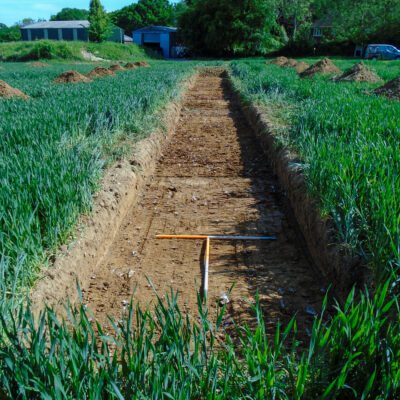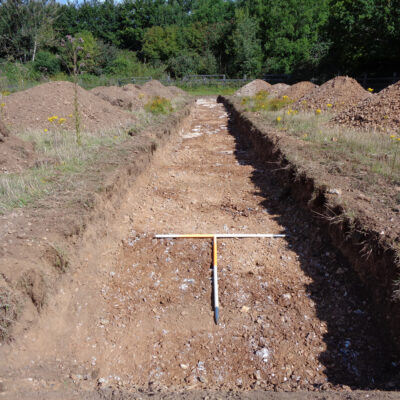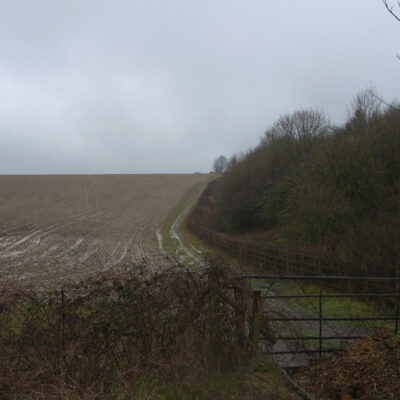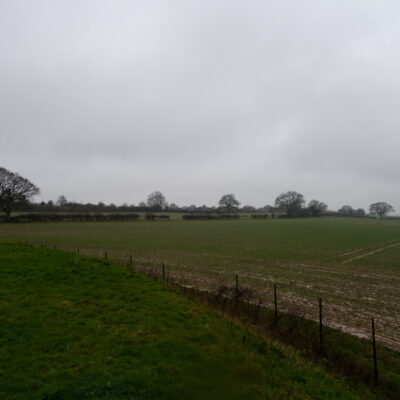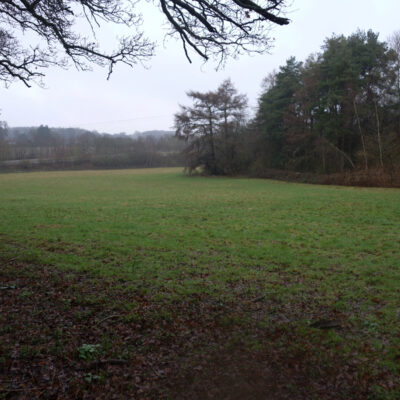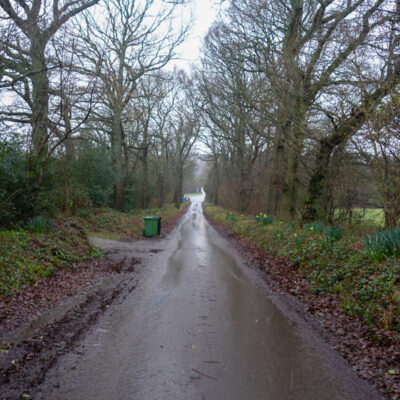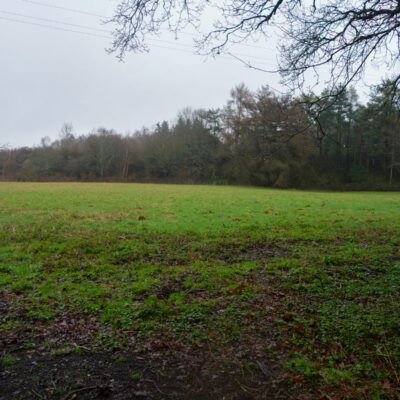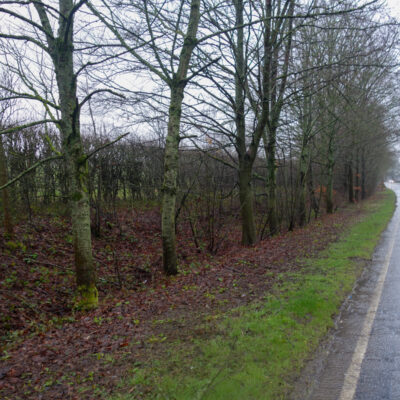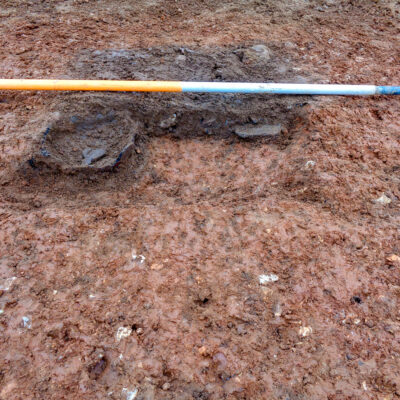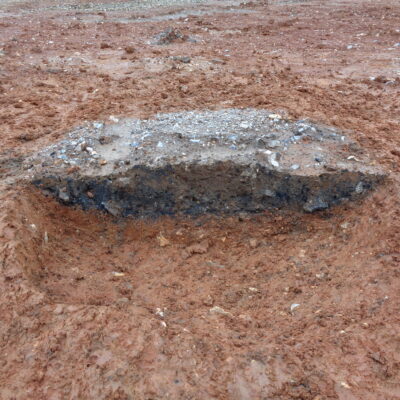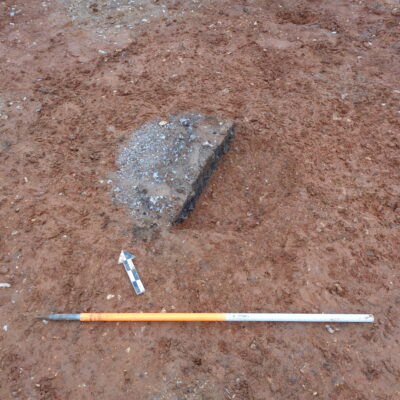Archaeological Field Evaluation and Excavation, Basingstoke
Two of the evaluation trenches, one in the northern part of the site and the second to the south, revealed possible prehistoric ditches, one of which contained 79 sherds of pottery suggesting a Late Bronze Age or Iron Age origin and two flints. The remaining trenches produced negative results.
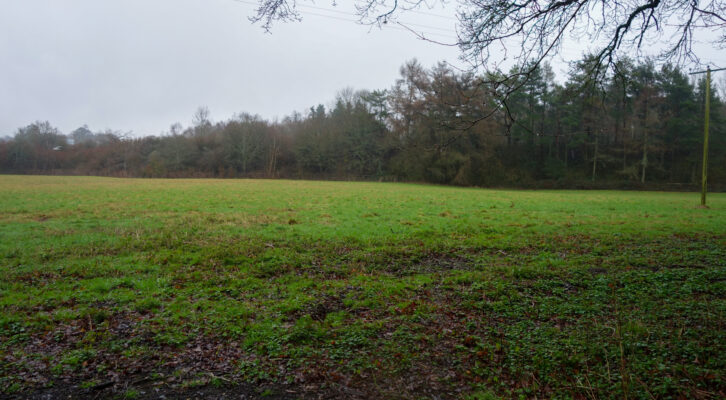
In Brief
Archaeological Field Evaluation
Archaeological Excavation
Key Points
- 332 trenches on 40ha of farmland for commercial and industrial development
- Multi-period prehistoric landscape (Palaeolithic to Iron Age)
- Adjacent to Silchester-Winchester Roman road
- Evaluation revealed prehistoric ditches and 1st millennium BC pottery and flint
- Two areas excavated - three possible cremation pits revealed within a large squared enclosure, one containing at least seven vessels dating from 1000 BC to 300 BC
Summary
Further excavation of the areas around these two trenches was agreed with the county archaeologist and, although the ditch in the northern part of the site (Area B) proved to be a natural feature, the southern area (Area A) revealed a large squared enclosure and a pit associated with evidence of contemporary land clearance.
The first evidence of prehistoric activity in Area A was a curvilinear gully containing two sherds of a Peterborough ware collared vessel dated 3000 BC to 2000 BC. Two potentially contemporary parallel gullies ran northwest-southeast and were cut by a ditch forming two arms of a large squared enclosure which had been truncated by construction of the M3.
Three possible cremation pits were revealed within the squared enclosure, one containing at least seven vessels dating from 1000 BC to 300 BC but no cremated bone.
Results
A detailed record was made of the archaeological remains and the results published in Hampshire Studies for wider appreciation of their significance.
Preservation by record enabled development to proceed.

